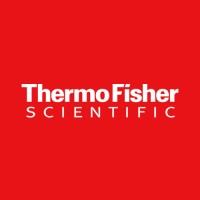CD45 / Qdot 705 / HI30
Product Details
| Description | CD45 / PTPRC Monoclonal Antibody, Qdot® 705 conjugate (HI30). CD45 (LCA, leukocyte common antigen) is a receptor-type protein tyrosine phosphatase ubiquitously expressed in all nucleated hematopoietic cells, comprising approximately 10% of all surface proteins in lymphocytes. CD45 glycoprotein is crucial in lymphocyte development and antigen signaling, serving as an important regulator of Src-family kinases. CD45 protein exists as multiple isoforms as a result of alternative splicing; these isoforms differ in their extracellular domains, whereas they share identical transmembrane and cytoplasmic domains. These isoforms differ in their ability to translocate into the glycosphingolipid-enriched membrane domains and their expression depends on cell type and physiological state of the cell. Besides the role in immunoreceptor signaling, CD45 is important in promoting cell survival by modulating integrin-mediated signal transduction pathway and is also involved in DNA fragmentation during apoptosis. CD45RA is an isoform of the CD45 complex and has restricted expression between different subtypes of lymphoid cells.FACS Assay Dependent | |
|---|---|---|
| Conjugate | Qdot 705 | |
| Clone | HI30 | |
| Target Species | Human | |
| Applications | FC | |
| Supplier | Thermo Fisher Scientific | |
| Catalog # | Sign in to view product details, citations, and spectra | |
| Size | ||
| Price | ||
| Antigen | ||
| Host | ||
| Isotype |
About CD45
The protein encoded by this gene is a member of the protein tyrosine phosphatase (PTP) family. PTPs are known to be signaling molecules that regulate a variety of cellular processes including cell growth, differentiation, mitosis, and oncogenic transformation. This PTP contains an extracellular domain, a single transmembrane segment and two tandem intracytoplasmic catalytic domains, and thus is classified as a receptor type PTP. This PTP has been shown to be an essential regulator of T- and B-cell antigen receptor signaling. It functions through either direct interaction with components of the antigen receptor complexes, or by activating various Src family kinases required for the antigen receptor signaling. This PTP also suppresses JAK kinases, and thus functions as a regulator of cytokine receptor signaling. Alternatively spliced transcripts variants of this gene, which encode distinct isoforms, have been reported. [provided by RefSeq, Jun 2012]
The protein encoded by this gene is a member of the protein tyrosine phosphatase (PTP) family. PTPs are known to be signaling molecules that regulate a variety of cellular processes including cell growth, differentiation, mitosis, and oncogenic transformation. This PTP contains an extracellular domain, a single transmembrane segment and two tandem intracytoplasmic catalytic domains, and thus is classified as a receptor type PTP. This PTP has been shown to be an essential regulator of T- and B-cell antigen receptor signaling. It functions through either direct interaction with components of the antigen receptor complexes, or by activating various Src family kinases required for the antigen receptor signaling. This PTP also suppresses JAK kinases, and thus functions as a regulator of cytokine receptor signaling. Alternatively spliced transcripts variants of this gene, which encode distinct isoforms, have been reported. [provided by RefSeq, Jun 2012]
About Qdot 705
Qdot® 705 from Thermo Fisher Scientific is an inorganic nanocrystal with a surface functionalized to allow antibodies and biomolecules to be cross-linked. It is most efficiently excited between 320-405 nm but is capable of excitation across every laser less than its emission peak. It is significantly brighter and more photostable than traditional organic fluorophores, making it still useful for fluorescence microscopy, however its size and solubility issues make it a challenge to use in flow cytometry. In spectral flow cytometry it may still prove useful due to its very unique spectral characteristics
Qdot® 705 from Thermo Fisher Scientific is an inorganic nanocrystal with a surface functionalized to allow antibodies and biomolecules to be cross-linked. It is most efficiently excited between 320-405 nm but is capable of excitation across every laser less than its emission peak. It is significantly brighter and more photostable than traditional organic fluorophores, making it still useful for fluorescence microscopy, however its size and solubility issues make it a challenge to use in flow cytometry. In spectral flow cytometry it may still prove useful due to its very unique spectral characteristics
Experiment Design Tools
Panel Builders
Looking to design a Microscopy or Flow Cytometry experiment?
Validation References
Reviews & Ratings
| Reviews |
|---|
Looking for more options?
5460 CD45 antibodies from over 61 suppliers available with over 224 conjugates.





